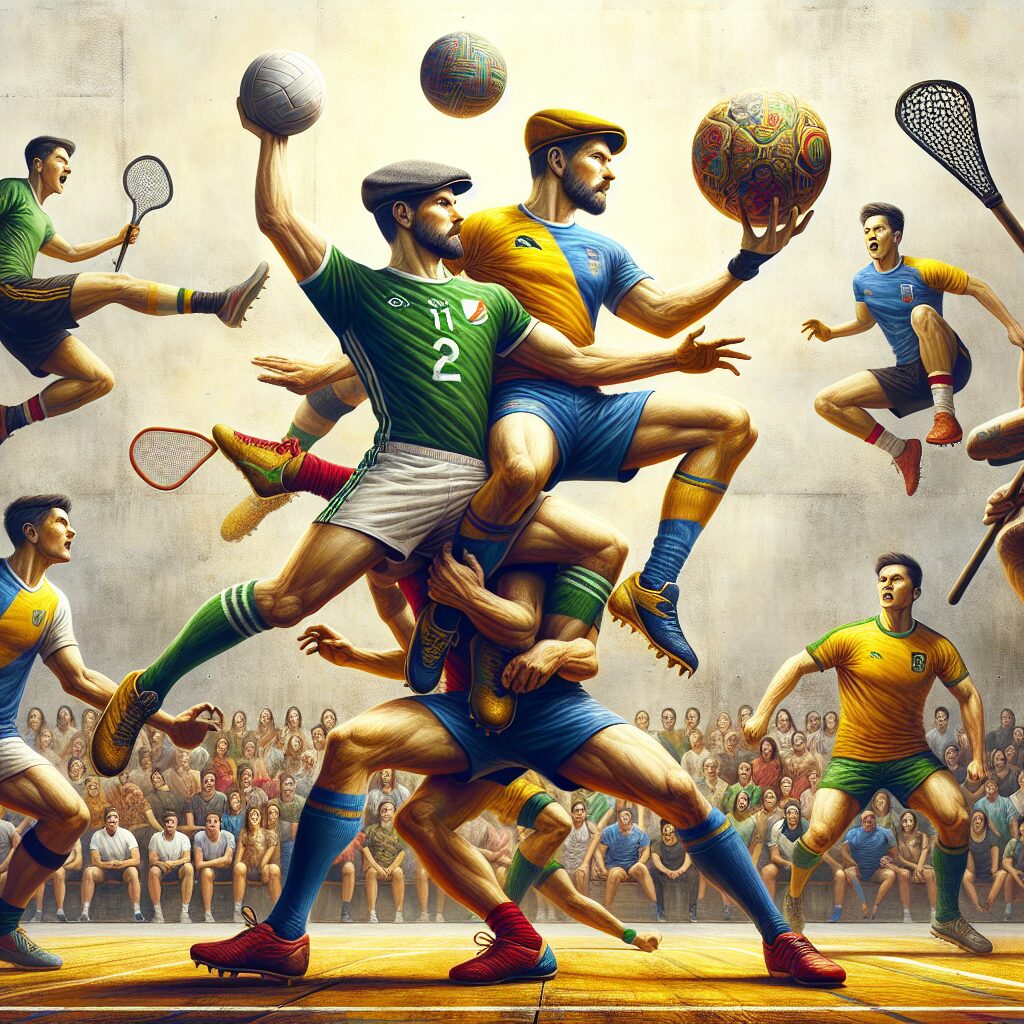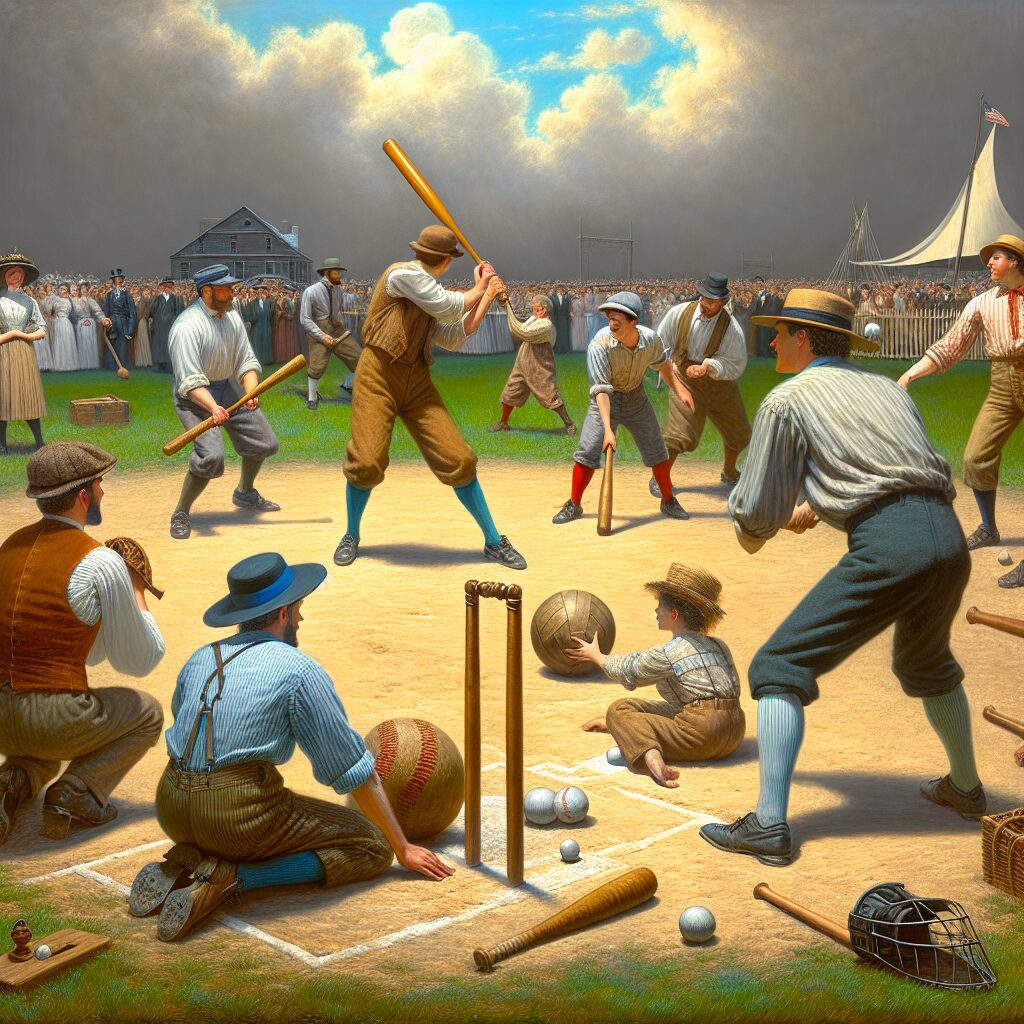Regional Ball Games: Unique Sporting Traditions
Ball games have been a part of human civilization for centuries, with each region of the world developing their own unique variations and traditions. From the fast-paced game of Gaelic football in Ireland to the intense competition of Sepak Takraw in Southeast Asia, these regional ball games showcase the rich sporting heritage and deep-rooted cultural values of different communities. These games not only provide entertainment but also serve as a platform for social cohesion and identity formation.
One fascinating aspect of regional ball games is their deep connection to the local culture and history. For instance, the ancient Mesoamerican ballgame, known as Ulama, was played by the Mayans and Aztecs as a sacred ritual to honor their gods. This game involved a rubber ball that had to be struck with the hips or elbows, showcasing the strength and agility of the players. Similarly, Kabaddi, a popular sport in South Asia, is deeply rooted in the rural traditions and serves as a metaphor for rural life, with its emphasis on physical strength, bravery, and tenacity.
In the upcoming sections, we will delve into the key takeaways from these regional ball games that have captivated both players and spectators alike. We will explore the cultural significance of these games, their impact on communities, and how they contribute to the preservation of local traditions. Join us on this enlightening journey as we unravel the unique sporting traditions and uncover the hidden gems behind these beloved regional ball games.
Key Takeaways
1. Regional ball games are unique sporting traditions that are deeply rooted in specific cultures and communities around the world.
2. These ball games often have interesting and diverse rules, equipment, and playing styles, making them fascinating to learn about and witness.
3. The article features a selection of regional ball games from different countries, including sepak takraw from Southeast Asia, hornussen from Switzerland, and ulama from Mexico.
4. Sepak takraw is a captivating game that combines elements of volleyball and soccer, with players using their feet, heads, and chests to keep a rattan ball in the air.
5. Hornussen is an ancient Swiss sport where players use a specialized wooden paddle to hit a small rubber disk as far as possible, showcasing impressive precision and strength. Ulama, on the other hand, is a traditional Mexican ball game that requires agility, teamwork, and strategies similar to modern-day soccer and basketball.
What are the Unique Sporting Traditions of Regional Ball Games?
Overview of Regional Ball Games
Regional ball games are a fascinating aspect of sporting traditions around the world. These unique games have been played for generations, often tied to a specific region’s culture and history. From ancient civilizations to modern times, regional ball games offer a glimpse into the rich heritage and diverse sporting practices. In this article, we will explore various regional ball games and their unique sporting traditions.
1. Pelota in Basque Country, Spain
Pelota is a traditional ball game that originated in the Basque Country of Spain. It is played with a cesta, a long curved basket strapped to players’ arms, allowing them to catch and throw the ball against a wall. This fast-paced game requires agility, precision, and strength. The Basque people take great pride in this game, and it has become an integral part of their cultural heritage.
2. Sepak Takraw in Southeast Asia
Sepak Takraw is a popular sport in Southeast Asia, especially in countries like Thailand, Malaysia, and Indonesia. It combines elements of soccer and volleyball, where players use their feet, chest, and head to hit a small rattan ball over the net. The acrobatic displays of athleticism in Sepak Takraw are truly impressive, as players execute gravity-defying kicks and aerial maneuvers. The game has gained international recognition and is even played competitively on a global scale.
3. Calcio Storico in Florence, Italy
Calcio Storico, also known as historic football, is a traditional ball game played in Florence, Italy. Dating back to the 16th century, this game is a mix of soccer, rugby, and wrestling. Two teams compete in an intense match, aiming to score goals by any means necessary. Calcio Storico is known for its physicality and rough nature, attracting both players and spectators passionate about this unique sporting tradition.
4. Hurling in Ireland
Hurling is an ancient Gaelic game played in Ireland, often referred to as the fastest field game in the world. Players use a wooden stick called a hurley to hit a small ball called a sliotar between the opponents’ goalposts, scoring points in the process. The game requires exceptional hand-eye coordination, speed, and endurance. Hurling holds tremendous cultural significance in Ireland, with the All-Ireland Senior Hurling Championship being one of the most anticipated sporting events in the country.
5. Kabaddi in South Asia
Kabaddi is a contact team sport that originated in ancient India and is now popular in other South Asian countries like Bangladesh, Pakistan, and Nepal. The game involves two teams, with one player, known as the “raider,” entering the opposing team’s side to tag as many opponents as possible and return safely to their own side without being tackled. Kabaddi showcases a unique blend of strength, strategy, and agility, and it has grown in popularity globally.
6. Shinty in Scotland
Shinty is a traditional ball game played in Scotland, often referred to as “hockey’s wild cousin.” Players use a stick called a caman to hit a small ball, aiming to score by hitting it into the opponent’s goal. Shinty showcases the physicality and skill of its players, and it has a strong connection to Scottish culture and identity. The Camanachd Cup, the premier trophy in shinty, is highly coveted among teams.
Tips for Exploring Regional Ball Games
1. Research the history and cultural significance of the regional ball games that interest you.
2. Watch videos or attend live matches to get a better understanding of the gameplay and rules.
3. Engage with locals or join fan communities to learn more about the traditions and experiences associated with these games.
4. Consider trying out the games yourself, either recreationally or by joining local clubs or teams.
5. Embrace the spirit of diversity and learn to appreciate the unique sporting traditions that regional ball games offer.
Now go, dive into the fascinating world of regional ball games!
FAQs
1. What are regional ball games?
Regional ball games are unique sporting traditions that are specific to certain regions or cultures. These games typically involve a ball and are played with varying rules and objectives.
2. Why are regional ball games considered unique?
Regional ball games are considered unique because they have been passed down through generations and have evolved in their own distinct ways. They often incorporate local customs, traditions, and geographical elements, making them unlike any other sports played across the globe.
3. What are some examples of regional ball games?
Examples of regional ball games include Gaelic football in Ireland, sepak takraw in Southeast Asia, bocce ball in Italy, cricket in England, and hurling in Scotland.
4. Are regional ball games popular worldwide?
While some regional ball games have gained international popularity and recognition, the level of popularity varies depending on the game and the region. Certain games like soccer or baseball have achieved global recognition, while others may remain less known outside of their specific regions.
5. How do regional ball games contribute to local culture?
Regional ball games play a significant role in preserving local culture and promoting community unity. They often serve as a way to celebrate heritage, express regional identity, and foster a sense of belonging among participants and spectators.
6. Can regional ball games be played competitively?
Yes, regional ball games can be played both recreationally and competitively. Many of these games have organized leagues, tournaments, and championships where skilled players compete against each other.
7. Are there any health benefits associated with playing regional ball games?
Playing regional ball games promotes physical fitness, enhances coordination, and improves cardiovascular endurance. These games often require a combination of agility, strength, and tactical thinking, thereby offering various health benefits to participants.
8. Is it necessary to follow traditional rules while playing regional ball games?
While it’s important to respect and preserve the traditional rules of regional ball games, variations and adaptations are common. As long as the essence and spirit of the game are maintained, modifications can be made to adapt to different environments or cater to diverse player demographics.
9. Can regional ball games be played by people of all ages?
Yes, regional ball games can be enjoyed by people of all ages. Many of these games have different versions or variations that cater to different age groups, allowing everyone to participate and enjoy the experience.
10. How can one get involved in regional ball games?
To get involved in regional ball games, one can join local clubs, attend community events, or participate in sports organizations that promote these games. Additionally, exploring cultural festivals or seeking guidance from experienced players can provide opportunities to engage with regional ball games.
Final Thoughts
Regional ball games are not just sports; they are threads that weave together the fabric of a community’s identity. These unique sporting traditions embody the rich cultural heritage and historical significance of a region, fostering a sense of pride and unity among its people. Whether played for leisure or in competitive settings, regional ball games bridge the gap between generations, promote physical fitness, and reinforce the bonds of community and tradition.
While the world has witnessed the globalization of mainstream sports, it is crucial to remember and appreciate the existence of regional ball games. These games offer a glimpse into the diverse array of sporting traditions that have been nurtured and cherished around the world. Exploring and embracing regional ball games not only allows us to celebrate cultural diversity but also encourages us to preserve and respect our collective sporting heritage for future generations.




